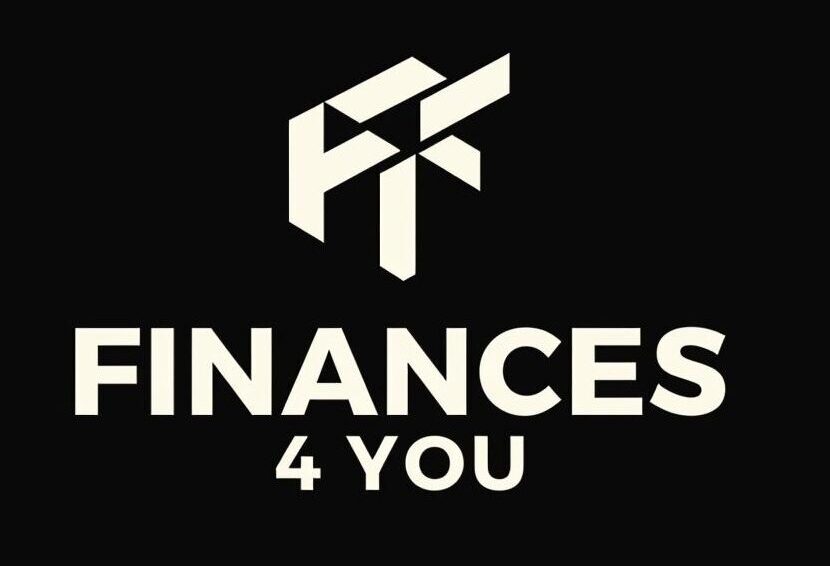The Building Blocks of Financial Freedom
Ever feel like you’re climbing a financial mountain with no gear? You’re not alone. According to a recent LendingClub survey, a staggering 60% of American adults are living paycheck to paycheck—and surprisingly, over 40% of high-income earners are in the same boat. This isn’t just a low-income problem; it’s a financial foundation problem.
Building a strong financial foundation isn’t about flashy investments or complicated strategies. It’s about getting the basics right first. Think of it like building your dream house—you wouldn’t install marble countertops before pouring a solid concrete foundation, right?
What does this foundation actually look like? At its core, it includes having a positive net worth (owning more than you owe), maintaining positive cash flow (more money coming in than going out), establishing a robust emergency fund (covering 3-6 months of essential expenses), managing your debt wisely (especially high-interest obligations), and protecting what matters through appropriate insurance coverage.
“A strong financial foundation is the essential set of habits and practices that create the lasting financial security and stability you need to design, build, and live the life you want,” as many financial experts remind us. The beauty here is that it’s not about making one perfect financial decision—it’s about creating consistent money habits that compound over time.
The good news? You don’t need an economics degree to build this foundation. You just need deliberate action, patience, and the roadmap we’re about to share with you. Financial stability isn’t built overnight, but the steps to get there are simpler than you might think.

Ready to strengthen your financial house? We’ve got resources to help you every step of the way. Check out our guides on how to increase net worth, understand net worth benchmarks by age, and learn what a healthy debt to net worth ratio benchmark looks like.
Building a strong financial foundation isn’t about getting rich quick—it’s about creating stability that lets you weather financial storms and build lasting wealth. In the sections that follow, we’ll break down each building block and give you practical steps to strengthen your financial future.
Assess Where You Stand
Before you can build anything solid, you need to know exactly where you’re starting from. It’s like surveying the land before breaking ground on your dream home – you wouldn’t start pouring a foundation without knowing if you’re on solid ground!
Calculate Your Net Worth
Your net worth gives you the clearest snapshot of your financial health right now. Simply put, it’s what you own minus what you owe.
Think of your assets as everything adding value to your financial picture. Your checking and savings accounts, investment portfolios, retirement accounts like your 401(k) or IRAs, your home, vehicles, and even valuable collections all count toward what you own.
On the flip side, your liabilities represent financial obligations pulling you down. These include your mortgage, auto loans, student debt, credit card balances, personal loans, and any medical bills you’re still paying off.
When you subtract what you owe from what you own, you get your net worth. Don’t worry if that number is negative right now – especially if you’re early in your career or still paying off education. What matters most is creating a plan to improve it consistently over time.
At Finances 4You, we encourage readers to track their net worth over time to witness their progress and stay motivated. It’s like watching a garden grow – slow at first, but eventually blossoming into something beautiful!

Map Your Monthly Cash Flow
While your net worth is a financial snapshot, your cash flow tells the whole story – like watching a movie instead of looking at a still photo. It shows how money moves through your life month after month.
Where’s your money coming from? Take stock of your salary or wages, any freelance work, investment dividends, rental income if you’re a landlord, or side hustles that bring in extra cash.
Where’s it all going? Track your fixed expenses like rent or mortgage payments and loan installments. Don’t forget variable necessities like groceries and utilities, plus all those discretionary purchases that make life enjoyable – dinners out, entertainment, and shopping.
The golden rule of building a strong financial foundation is beautifully simple: spend less than you earn. This positive cash flow is like the heartbeat of financial health. If you’re consistently spending more than you make, it’s time to either boost your income or trim those expenses.
I highly recommend downloading this handy cash flow budget template to get a crystal-clear picture of your monthly money movements. Knowledge truly is power when it comes to your finances!
Pull & Polish Your Credit Report
Your credit score impacts nearly every aspect of your financial life – from the interest rates you’ll pay on loans to your ability to rent an apartment or even land certain jobs.
FICO scores range from 300-850, with excellent credit starting at 800+, very good falling between 740-799, good ranging from 670-739, fair between 580-669, and poor being anything below 580.
Did you know you’re entitled to one free credit report annually from each major bureau (Experian, TransUnion, and Equifax) through AnnualCreditReport.com? Take advantage of this!
When reviewing your report, look for any errors that might be dragging your score down unnecessarily. Check your credit utilization (ideally keep it below 30% of available credit), and review your payment history to address any past issues.
As we like to tell our Finances 4You community, “Your credit report is essentially your financial resume – it tells potential lenders how responsibly you’ve handled borrowed money in the past.” A strong credit score isn’t built overnight, but with consistent attention, it becomes another pillar in your solid financial foundation.
According to a recent LendingClub survey, 60% of Americans are living paycheck to paycheck – a sobering reality check that reminds us why this financial foundation work is so crucial. No matter where you’re starting from today, understanding your current position is the first step toward building something better.
Building a Strong Financial Foundation: The Core Pillars
Once you understand where you stand financially, it’s time to construct the pillars that will support your financial house for years to come. Think of these pillars as the load-bearing walls that keep everything stable—even when life throws storms your way.

According to Forbes, individuals with structured financial plans accumulate nearly 250% more retirement savings than those without plans. And it’s not just about retirement—scientific research published in the Social Science Research Network shows that having emergency savings buffers significantly reduces financial stress and improves overall wellbeing.
Pillar 1: Budgeting Is the Blueprint for Building a Strong Financial Foundation
A budget isn’t about restriction—it’s about intention. Think of it as telling your money where to go instead of wondering where it went at the end of each month.
The 50/30/20 rule provides a simple framework that many of our readers find helpful: allocate 50% of your income to needs (housing, food, utilities), 30% to wants (that fancy coffee, concert tickets), and 20% to savings and debt repayment. If that feels overwhelming, start by just tracking your spending for 30 days. You might be surprised to find your latte habit isn’t the budget-buster you thought—but those random Amazon purchases definitely add up!
For those who prefer more structure, the envelope system works wonders. Whether you use physical cash envelopes or digital “buckets” in apps like YNAB, the principle is the same: when an envelope is empty, spending in that category stops until next month. It’s like having a built-in spending referee!
At Finances 4You, we’ve compiled The Ultimate Budgeting Resource Guide: Methods, Templates, Apps to help you find the system that works with your personality, not against it.
Pillar 2: Emergency Savings—Cornerstone of a Strong Financial Foundation
Life has a funny way of throwing expensive surprises our way exactly when we least expect them. Your car doesn’t care that it’s two weeks until payday when it decides to break down.
We recommend a two-phase approach that feels achievable rather than overwhelming:
First, build a mini-emergency fund of $1,000 as quickly as possible. This handles most minor emergencies without derailing your other financial goals.
Then, work toward a full emergency fund of 3-6 months of essential expenses. If you’re self-employed or have an irregular income, aim for the higher end of that range to account for income volatility.
Where should you keep this money? High-yield savings accounts offer the perfect balance of liquidity (you can access the money quickly) while earning some interest. They’re separate from your checking account to reduce the “oh, I’ll just borrow from it” temptation but accessible when true emergencies arise.
Want some motivation and accountability? Join our Emergency Savings Challenge to jumpstart your fund alongside other Finances 4You readers.
Pillar 3: Crush High-Interest Debt
The average American household with credit card debt carries a balance of $5,805 with interest rates often exceeding 20%. At these rates, minimum payments barely make a dent in the principal—it’s like trying to empty a bathtub with a teaspoon while the faucet is still running.
There are two popular strategies for debt elimination, and both work—the key is picking the one that matches your personality:
The Debt Snowball Method has you tackle your smallest balances first, regardless of interest rate. The psychological wins of completely eliminating debts one by one creates momentum that keeps you motivated. It’s perfect if you need those small victories to stay on track.
The Debt Avalanche Method is mathematically optimal—you tackle the highest-interest debts first, which saves the most money over time. If you’re driven by efficiency and the numbers, this approach is for you.
“The best investment you can make is to pay off your credit card,” is advice we regularly share with our readers. With credit card interest rates often exceeding 20%, paying off this debt is like getting a guaranteed 20% return on investment—better than most stock market returns!
For those juggling multiple high-interest debts, consolidation through a personal loan or balance transfer card with a lower interest rate can simplify payments and reduce interest costs significantly.
Pillar 4: Protect What Matters
Insurance isn’t the most exciting topic at dinner parties, but it’s a crucial part of building a strong financial foundation. Without proper protection, one medical emergency, accident, or home disaster could wash away years of careful financial planning.
“What happens to your family if you are not there to provide for them?” asks Shannon Ryan, CFP®. This question should guide your insurance and estate planning decisions.
Essential protections include health insurance to avoid catastrophic medical bills, life insurance to provide for dependents if you’re no longer able to, and disability insurance which replaces income if you can’t work due to illness or injury. Surprisingly, you’re more likely to need disability insurance during your working years than life insurance, yet it’s often overlooked.
Don’t forget property insurance to protect your home and possessions, including liability coverage for accidents on your property. (Time your neighbor slipped on your icy sidewalk? Exactly.)
Beyond insurance, everyone—yes, everyone—should have basic estate planning documents including a will, power of attorney, and healthcare directive. These aren’t just for the wealthy; they’re for anyone who wants to have a say in what happens to their stuff and their health decisions.
Pillar 5: Grow & Diversify
Once you’ve established budgeting habits, built emergency savings, tackled high-interest debt, and secured proper protection, you’re ready to focus on growth. This is where your money starts working for you instead of you always working for it.
Start with retirement accounts that offer tax advantages. If your employer offers a 401(k) match, that’s literally free money—don’t leave it on the table! Individual retirement accounts like Traditional IRAs (which may offer tax deductions now) and Roth IRAs (where qualified withdrawals are tax-free later) are excellent supplements.
For parents thinking about education costs, 529 plans offer tax advantages for college funds that can make a huge difference in your child’s financial future.
When investing, simplicity often beats complexity. Index funds offer a low-cost way to own a slice of the entire market, while ETFs (Exchange-Traded Funds) work similarly but trade like stocks. If you prefer a set-it-and-forget-it approach, target-date funds automatically adjust risk based on your planned retirement date.
Your risk tolerance—how comfortable you are with market fluctuations—should guide how you divide your investments between stocks (higher risk but higher potential return) and bonds (lower risk with more modest returns). Investing is a marathon, not a sprint.
“Money is power,” notes the Ellevest team. “A strong financial foundation turns money into a source of strength instead of stress.” At Finances 4You, we couldn’t agree more.
Budget, Protect & Grow: 90-Day Action Plan
Ready to transform your financial life? Let’s break down this journey into bite-sized, achievable steps over the next 90 days. Think of this as your roadmap to building a strong financial foundation – one that will support your dreams for years to come.

Days 1-30: Track, Trim, Transfer
Your first month is all about awareness and setting up systems that work for you. During week one, make tracking your spending a daily habit. Whether you prefer a budgeting app, a simple notebook, or a spreadsheet, record everything – that $4 coffee counts too!
By week two, you’ll start seeing patterns. This is when you’ll separate true needs from wants. Your mortgage? Definitely a need. That streaming service you haven’t watched in months? That’s a want you might reconsider.
“I was shocked to find I was spending over $200 monthly on random Amazon purchases,” shared one Finances 4You reader. “Just tracking my spending cut that in half without feeling deprived.”
Week three is your chance to find money hiding in plain sight. Review your recurring bills – could you negotiate a better rate on your cell phone plan? Are you paying for gym memberships or subscriptions you rarely use? Even small changes add up when you’re building a strong financial foundation.
By week four, you’re ready for the game-changer: automation. Open a separate savings account specifically for emergencies, then set up automatic transfers that happen right after payday. Remember what financial expert Erin Lowry advises: “Never skim money out of financial goals to fix overspending.” When you pay yourself first, you’re prioritizing your future self.
Days 31-60: Build the Buffer & Slay Debt
Now that you’ve got momentum, it’s time to accelerate your emergency fund and tackle debt head-on. Your mini-emergency fund goal of $1,000 provides immediate peace of mind while you work on bigger goals. Consider selling items you no longer need or temporarily cutting back on non-essentials to reach this milestone faster.
Week six is about getting brutally honest with your debt. Gather all your statements and create a simple list showing each debt’s balance, interest rate, and minimum payment. Then decide whether the debt snowball (smallest balance first) or debt avalanche (highest interest rate first) method feels right for you.
“Getting rid of any debt with no corresponding asset is essential to financial success,” notes Katie Brewer, CFP®. “It naturally increases your net worth and frees you up from cumbersome payments.” That’s why finding extra money for debt payments during week seven is so powerful. Consider allocating 75% of any extra funds to debt and 25% to building your emergency savings.
The real magic happens in week eight when you automate your debt payoff strategy. Set up automatic minimum payments for all debts, plus extra payments for your target debt. Some lenders even allow biweekly payments, which can significantly reduce interest over time.
Days 61-90: Invest & Insure
As you enter the final month of your 90-day plan, it’s time to look beyond immediate needs to your long-term security. Week nine focuses on retirement planning – if your employer offers a 401(k) match, that’s literally free money waiting for you. Don’t leave it on the table! No employer plan? Consider opening an IRA to start building your retirement nest egg.
Week ten is about closing protection gaps in your financial life. Review your current insurance policies – health, auto, home/renters, and life if you have dependents. Are you adequately covered if something unexpected happens? Getting quotes from different providers might save you money while improving your coverage.
During week eleven, tackle the basics of estate planning. Creating a simple will, designating beneficiaries on all your accounts, and preparing power of attorney documents aren’t just for the wealthy – they’re essential parts of building a strong financial foundation for everyone.
Finally, week twelve is your chance to reflect and recalibrate. How has your emergency fund grown? What progress have you made on debt? Which budget categories need adjustment? Set specific goals for the next six months and year to maintain your momentum.
“Financial wellness is a lifelong endeavor, not an end destination,” we often remind our Finances 4You community. “And it’s never too late—or too early—to start practicing it.”
| Method | Focus | Pros | Cons |
|---|---|---|---|
| Debt Snowball | Smallest balance first | Psychological wins, momentum | May pay more interest overall |
| Debt Avalanche | Highest interest rate first | Mathematically optimal, saves most money | May take longer to see first debt eliminated |
| Debt Consolidation | Combining multiple debts | Single payment, potentially lower interest | Requires good credit, doesn’t address spending habits |
The perfect is the enemy of the good when it comes to finances. You don’t need to implement every strategy perfectly – even small steps in the right direction will build the financial foundation you deserve.
Frequently Asked Questions about Building a Strong Financial Foundation
How big should my emergency fund really be?
The standard advice is 3-6 months of essential expenses, but the “right” amount truly depends on your unique life situation:
For single income households, aim for a full 6 months of coverage since you don’t have a second income to fall back on. If you’re in a dual income household, 3-4 months might provide sufficient protection since it’s unlikely both earners would lose income simultaneously.
Those who are self-employed or have variable income should consider building a larger 6-12 month buffer to weather the natural ups and downs of irregular earnings. Similarly, if you work in a specialized career field where job opportunities are limited or highly competitive, having 6+ months saved provides extra security during job transitions.
Your emergency fund should cover essential expenses only—think housing, utilities, food, transportation, and insurance—not your full lifestyle spending. As one financial expert wisely cautions, “Life throws you curveballs. Stop telling yourself a fairy tale that ideal budget conditions are normal conditions.” Your emergency fund is the shock absorber that helps you steer life’s inevitable bumps without derailing your financial progress.
Should I invest while paying off high-interest debt?
This common question comes down to a simple principle: compare potential returns.
If your debt carries an interest rate higher than what you could reasonably expect from investments (typically above 6-8%), you’ll generally want to focus on paying off that debt first. Think about it this way: a guaranteed 20% “return” from paying off a credit card beats an uncertain 7-10% from the stock market any day of the week.
However, there are two important exceptions to this rule:
-
Always contribute enough to get your employer’s 401(k) match – This is essentially free money and represents an immediate 50-100% return on your investment, which beats even high-interest debt.
-
Build at least a mini emergency fund first – Without this buffer, you’re just one unexpected expense away from ending up right back in debt, creating a frustrating cycle.
At Finances 4You, we often recommend what we call “a split the difference approach”—starting with a mini emergency fund before tackling high-interest debt—which balances immediate safety with financial progress.
How often do I need to revisit my financial plan?
Your financial plan should be a living document that evolves alongside your life. Think of it as a garden that needs different types of attention throughout the year:
Monthly: Take a quick peek at your budget performance and make small adjustments as needed. This keeps you connected to your money flow.
Quarterly: Check in on your progress toward debt payoff and savings goals. These quarterly check-ins help you stay motivated and make course corrections before you veer too far off track.
Annually: Conduct a comprehensive financial review including your insurance coverage, retirement contributions, investment allocations, estate planning documents, and credit reports. Think of this as your financial physical exam.
Beyond these regular check-ins, major life events should always trigger a review of your plan—marriage or divorce, birth of a child, job change or loss, inheritance or windfall, and home purchase or sale all warrant a fresh look at your financial foundation.
As we often remind our Finances 4You community, “Your financial foundation is the essential set of habits and practices that create the lasting financial security and stability you need to design, build, and live the life you want.” Just like a physical home, your financial foundation needs regular maintenance and occasional renovations as your life evolves.

Conclusion
Building a strong financial foundation isn’t about chasing overnight wealth or mastering complex investment strategies. It’s about embracing the fundamentals that truly matter: maintaining positive cash flow, building emergency savings, managing debt wisely, protecting what you value, and investing consistently.
Here at Finances 4You, we firmly believe financial security is within reach for anyone willing to take steady, intentional steps forward. The 90-day roadmap we’ve shared gives you a clear starting point, but remember—creating a solid foundation is more like a cross-country journey than a quick sprint around the block.
Your financial journey will have ups and downs, moments of progress and occasional setbacks. That’s perfectly normal! What matters most is picking yourself up after mistakes and continuing to move forward. As you progress, our team is here to provide the practical tools, honest insights, and supportive community you need to stay on track.
Our regular net worth benchmarks help you see how you’re doing compared to peers, while our planning resources offer guidance when you’re feeling stuck or uncertain. These touchpoints can help you measure progress and maintain motivation when the journey feels challenging.
“Building a financial foundation is a process that takes time. It’s less about hitting a single home run than making smart decisions on a daily basis.” This shift in perspective—moving from hunting quick wins to embracing daily financial habits—might be the most valuable mindset change you’ll make on your path to financial freedom.
The small choices you make each day—brewing coffee at home, automatically transferring money to savings, or reviewing your budget weekly—may seem insignificant in isolation. But over time, these habits compound into remarkable financial strength and stability.
Ready to take your next step? Explore our net worth insights to see how you compare to others in your age group and find strategies to accelerate your progress.
Remember: The best time to start building your financial foundation was 20 years ago. The second-best time is today. And we’ll be right here cheering you on, every step of the way.






1 thought on “Foundation First! Your Guide to Building a Solid Financial Future”
Pingback: Wealth Building 101: How to Invest Your Way to Financial Freedom - Finances 4 You
Comments are closed.